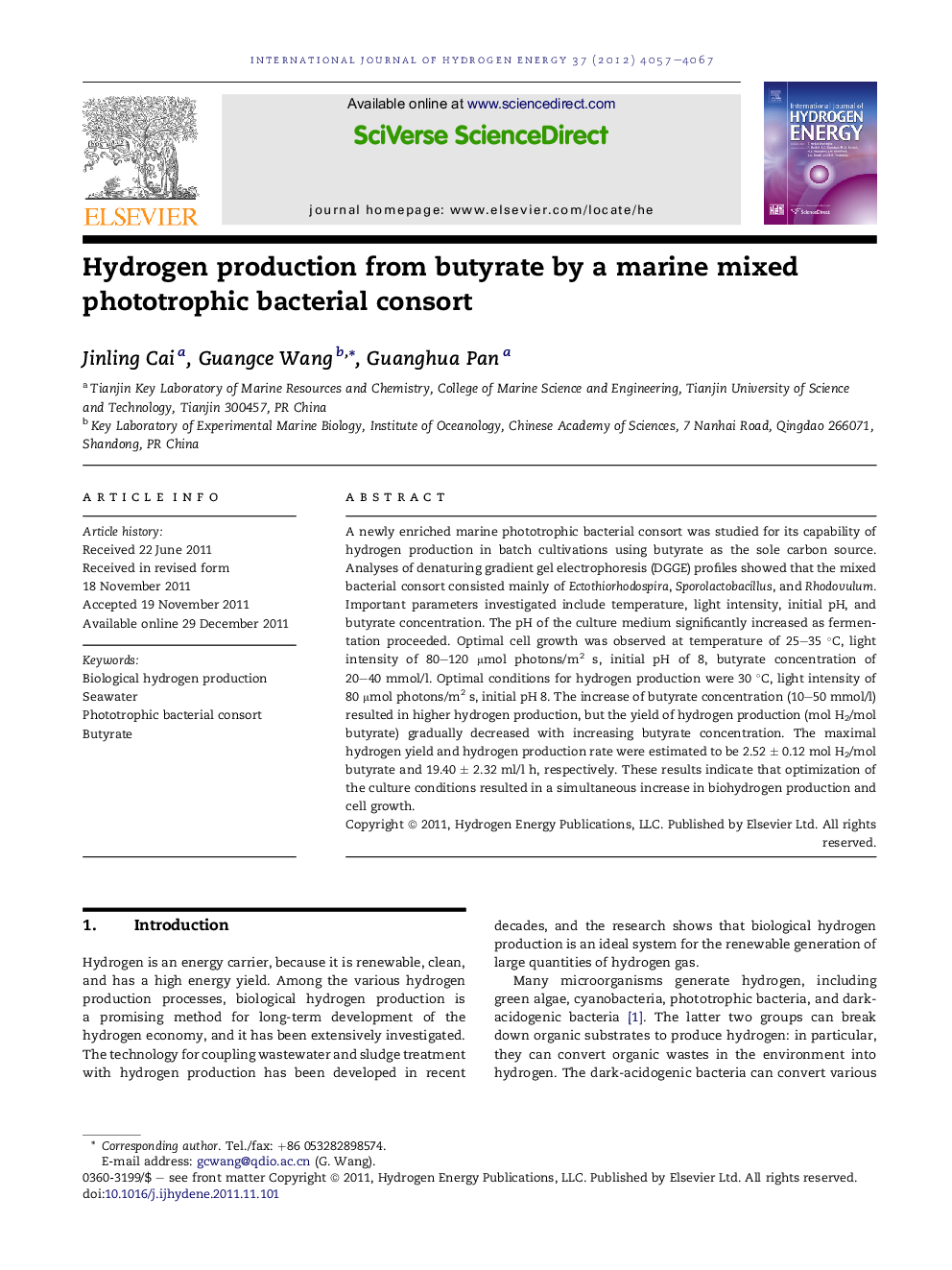| کد مقاله | کد نشریه | سال انتشار | مقاله انگلیسی | نسخه تمام متن |
|---|---|---|---|---|
| 1275459 | 1497564 | 2012 | 11 صفحه PDF | دانلود رایگان |

A newly enriched marine phototrophic bacterial consort was studied for its capability of hydrogen production in batch cultivations using butyrate as the sole carbon source. Analyses of denaturing gradient gel electrophoresis (DGGE) profiles showed that the mixed bacterial consort consisted mainly of Ectothiorhodospira, Sporolactobacillus, and Rhodovulum. Important parameters investigated include temperature, light intensity, initial pH, and butyrate concentration. The pH of the culture medium significantly increased as fermentation proceeded. Optimal cell growth was observed at temperature of 25–35 °C, light intensity of 80–120 μmol photons/m2 s, initial pH of 8, butyrate concentration of 20–40 mmol/l. Optimal conditions for hydrogen production were 30 °C, light intensity of 80 μmol photons/m2 s, initial pH 8. The increase of butyrate concentration (10–50 mmol/l) resulted in higher hydrogen production, but the yield of hydrogen production (mol H2/mol butyrate) gradually decreased with increasing butyrate concentration. The maximal hydrogen yield and hydrogen production rate were estimated to be 2.52 ± 0.12 mol H2/mol butyrate and 19.40 ± 2.32 ml/l h, respectively. These results indicate that optimization of the culture conditions resulted in a simultaneous increase in biohydrogen production and cell growth.
► A marine phototrophic bacteria consort was enriched and used for H2 production.
► Butyrate, one of the main VFA produced by dark-acidogenesis process, was used for H2 production.
► The microbial community was analyzed using 16 S rDNA-based techniques.
Journal: International Journal of Hydrogen Energy - Volume 37, Issue 5, March 2012, Pages 4057–4067